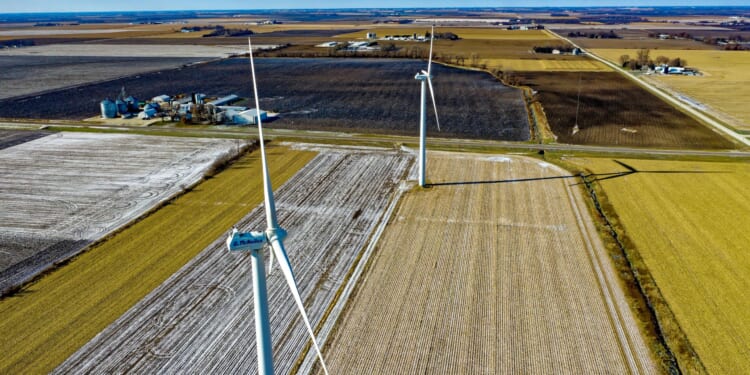The National Center for Energy Analytics released a report this month that evaluates each state’s financial assurances required for decommissioning wind and solar facilities. Given the short lifespans of wind turbines and solar panels — only 20 to 25 years or so — the first wave of hardware is approaching the end of their useful lives now. The sorry fact is that many states have neglected to “address and account for” the decommissioning process, leaving taxpayers and ratepayers exposes to the financial risks of taking down wind and solar at the end of their useful lives.
Decommissioning is “the process of removing physical structures and restoring a site back to its original or usable condition.” Standard practice is for the company operating the facility to pay for decommissioning, but since the financial viability of the original owners is not guaranteed in the future, states tend to require financial guarantees for anticipated decommissioning costs. Oil and gas drilling and nuclear plants have long had these requirements, but the NCEA’s analysis is one of the first to systematically evaluate the 50 states for their decommissioning rules for wind and solar facilities.
According to the report, 30 states received a failing grade (D or F) for their renewables decommissioning requirements, Minnesota receiving a D. Contrast this with oil and gas well decommissioning, where 25 states received an A and only one state failed.
In Minnesota, wind applicants must:
submit a plan that includes the estimated decommissioning costs “in current dollars,” a method and schedule for updating these costs, and an assurance that the funds will be available for decommissioning. It appears that this is an “as approved” standard, not a preset standard.
In Minnesota, “Solar appears to be local. For example, Center City’s regulation requires financial resources to be available to fully decommission the site. To obtain a grant, the locality should submit to the state government the cost of decommissioning.”
The NCEA report for Minnesota concludes that:
For wind, everything is discretionary. While it appears that the regulations are trying to establish financial assurance, nothing is firmly required. For solar, local regulations permit the amount of financial assurance to be self-determined.
Neighboring North Dakota also received a D, as the financial assurance for wind and solar decommissioning is not required until after construction and the costs are capped to not exceed 25 percent of the owners’ tangible net worth. NCEA notes that this cap could “potentially limit the amount to less than the cost of decommissioning,” exposing taxpayers to potential costs. The state received an A for its decommissioning practices for oil and gas.
The NCEA estimates the decommissioning costs to Minnesota of all existing facilities and those planned through 2030 to cost $628 million. The anticipated costs of decommissioning all installed and planned capacity through 2030 in North Dakota would cost $435 million.
This isn’t a theoretical concern, especially given that the cost to decommission wind and solar facilities ranges from $30 million to over $100 million per 1,000 megawatts of capacity. These costs land on the taxpayer if the original company goes bankrupt — which happens all too often in the wind and solar industry. Minnesotans should be better protected from the costs of wind and solar’s short lifespans.










